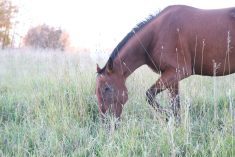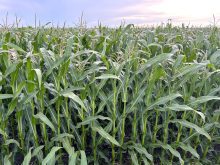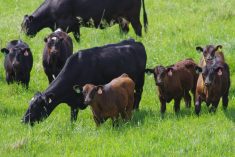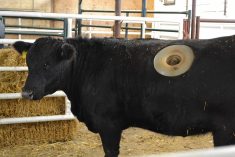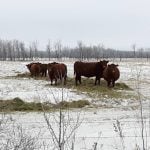Alberta’s cattle industry is in a crisis due to another year of drought, and while the latest AgriRecovery program will help the situation, more is needed to maintain the stability of the sector, according to the vice-chair of Alberta Beef Producers.
“It won’t be enough, guaranteed, and for some it’s too late and they won’t qualify,” said Sheila Hillmer, about federal-provincial drought assistance.
The Alberta government will contribute $66 million and the federal government $99 million to assist ranchers with extraordinary costs associated with accessing feed and dealing with prolonged drought conditions.
Read Also
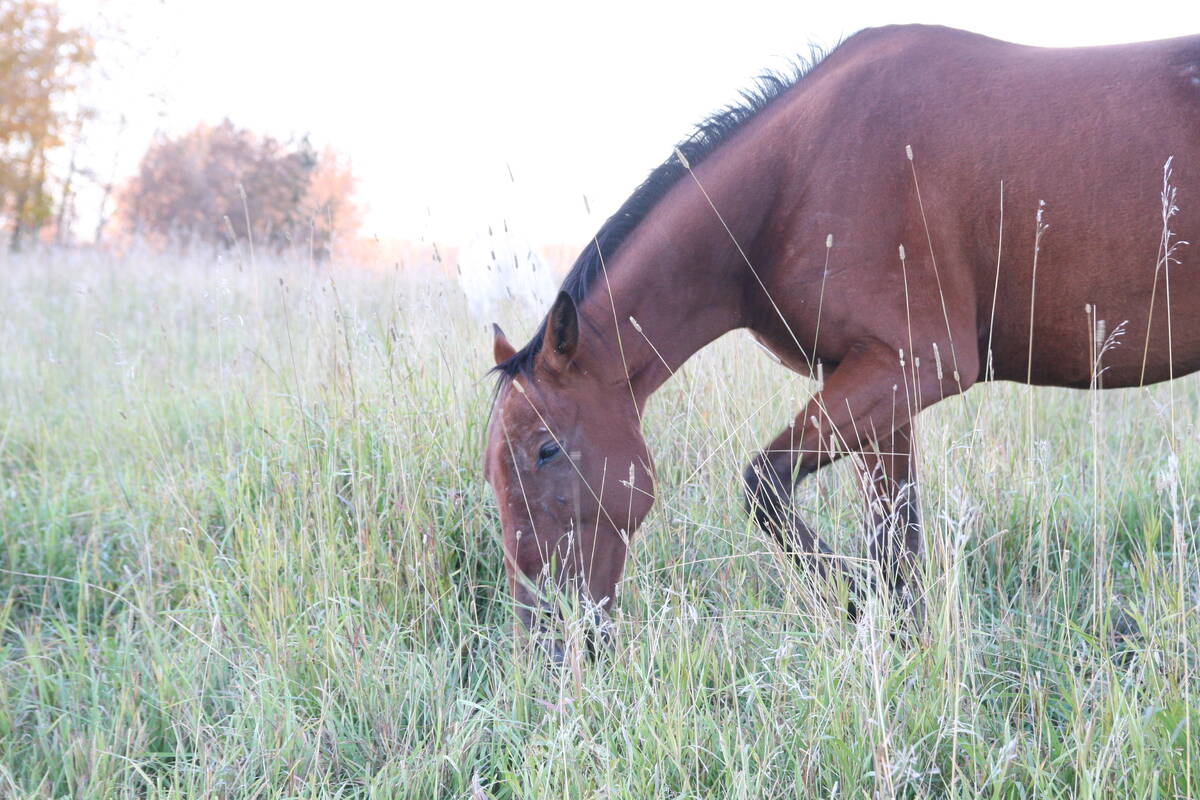
Beware giving horses too much iron
Horses consuming too much iron through diet or well water risk health problems like laminitis. Mineral testing forage and water is good practice for owners.
The federal portion is part of a $219 million assistance program under AgriRecovery that is being rolled out to Alberta, British Columbia and Saskatchewan.
Hillmer welcomed the assistance, which will see up to $150 a head for some producers. However, she said a proactive program is needed to ensure the viability of the country’s cattle industry, in which cattle numbers continue to shrink. Business risk management programs for beef producers continue to be lacking, she added.

“There has been more opportunity for profitability and sustainability for crops, so a lot of the land is being ripped up and being put back into crops because there is more profit and they are able to offset some of the losses with programs that exist,” said Hillmer.
Her words reinforce comments from ABP chair Brodie Haugan made earlier this fall. He said Alberta cattle producers need better business risk management programs that are more timely.
“I believe we are in a crisis,” said Haugan from his ranch about 80 kilometres south of Medicine Hat, in September. “We’ve seen the compounding effects of drought and severe weather. We’ve seen many counties declare states of disaster.
“We continue to hear of a lot of cattle going into town, a lot of pairs going into town. Producers have had to make that decision of how they’re going to get through the winter with the inventory that they have or the feed inventory that they have on hand.”
Details have yet to be announced about who will qualify for the Alberta program, which will be administered by the Agriculture Financial Services Corp.
Saskatchewan started rolling out assistance to livestock producers in late August with an initial payment of $80 a head as part of a $70 million advance on the anticipated AgriRecovery program. Saskatchewan’s program will allow eligible producers to access up to $77 million in designated areas based on Canadian Drought Monitor map, and up to $150 per head.
“I think it will be a big help for people who incurred extraordinary costs to source enough feed to get them through the winter,” said Keith Day, Saskatchewan Cattlemen’s Association chair.
“Earlier in the fall you could find feed, but it’s the freight that’s expensive. You have to haul it quite a way.”

Poor fit
The beef industry has historically found it hard to find BRM tools that suit the sector. Government programs often lean toward a “one size fits the entire ag sector” approach, said Haugan. In the process, the beef industry’s unique economic and logistical factors get lost in the shuffle.
AgriStability is one example that could be better tailored to the beef industry, he said.
According to AFSC, it offers protection against large declines that threaten farm viability and are beyond producers’ capacity to manage.
The program considers proceeds from agricultural commodity sales and production insurance to be allowable income. Allowable expenses include commodity purchases, as well as direct input costs incurred in the farming operation.
“There have been some very obvious holes identified with AgriStability, specifically around cow-calf production,” said Haugan.
Cow-calf operations don’t typically have high cash flow. They produce most of their own feed and never intend to sell it. That makes a financial shortfall hard to quantify.
Haugan also noted cow-calf operations tend to rely less on hired help, again making it a poor fit for AgriStability.
“A big part of how the program works is how you calculate the cost of your labour, which a lot of times isn’t actually paid labour. It’s family labour.”

Haugan ranches in a region hit hard by several years of drought and he said the losses are mounting.
“We’re in our fourth year of drought. We were forced to take some pretty serious, drastic management changes last year. We sold off 100 cows. We changed some of our grazing rotations. We didn’t keep our bred heifers at home. We left them in a feedlot for the summer.
“And if we didn’t do that last year, we wouldn’t have been able to get through this year. This year we haven’t built back our inventory at all. And that’s the only reason we’ve been able to get through this year.”
Crops fare better
Representatives from Alberta Canola Producers and Alberta Grains say most members have been able to get by with crop insurance.
Ian Chitwood, vice-chair of Alberta Canola, said most Alberta canola producers don’t see the need for an AgriRecovery solution for their operations.
“Despite the fact that we do have widespread drought and it’s in pretty much the whole southern half of Alberta, it’s not an exceptional circumstance like the beef sector is facing,” he said.
“I think that the broad consensus is that crop insurance will be suitable to meet the demand and meet the losses.”
Shannon Sereda, director of government relations, policy and markets for Alberta Grains, said most grain growers use AFSC’s crop insurance program.
Although that group will work with government to trigger an AgriRecovery solution if necessary, she said a lot of things have to occur before that happens.
“There’s a number of different criteria. One is whether existing programs can cover the loss,” said Sereda. “Another is if there’s extraordinary costs that wouldn’t occur under normal circumstances that they need support for, to offset the impacts of a disaster.
“Lastly, (the disaster) has to be widespread across a specific region.”
Sereda said the challenge with crop insurance is that multiple-year use creates more risk that subscribers ultimately pay for.
“If we look back to 2021 and now again in 2023, we’ve had some significant production losses due to the drought conditions. So it does start to really impact (producers’) premiums and their premium calculations,” said Sereda.
“So that’s something we’re also keeping our eye on because crop insurance is already a very kind of expensive part of our farmers’ operations.”



